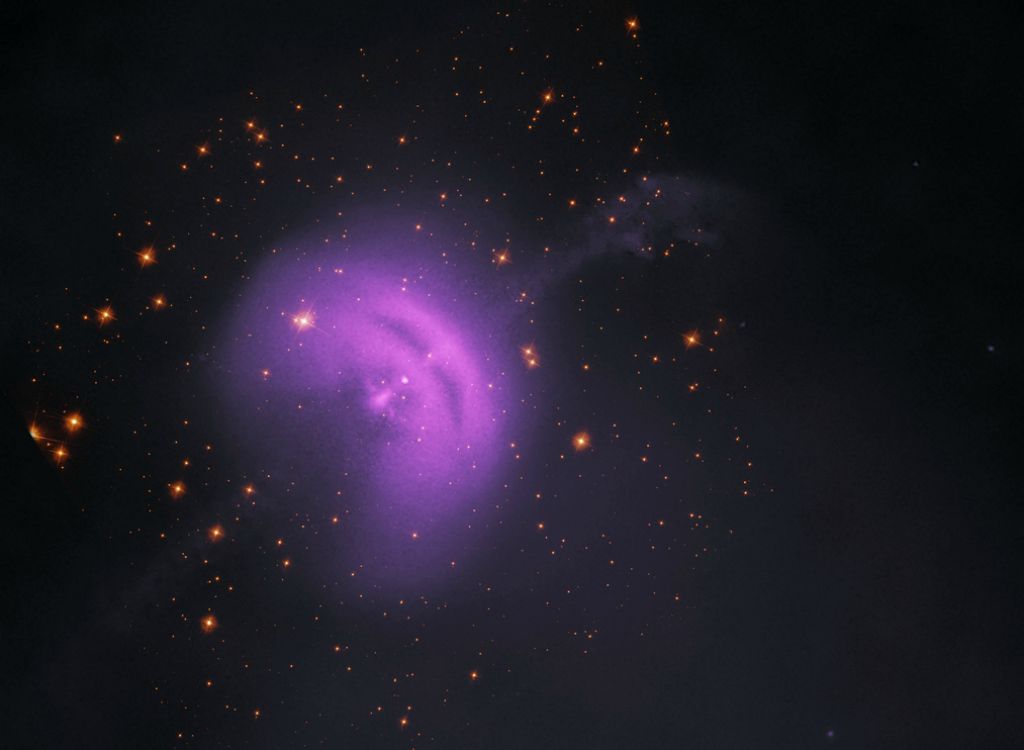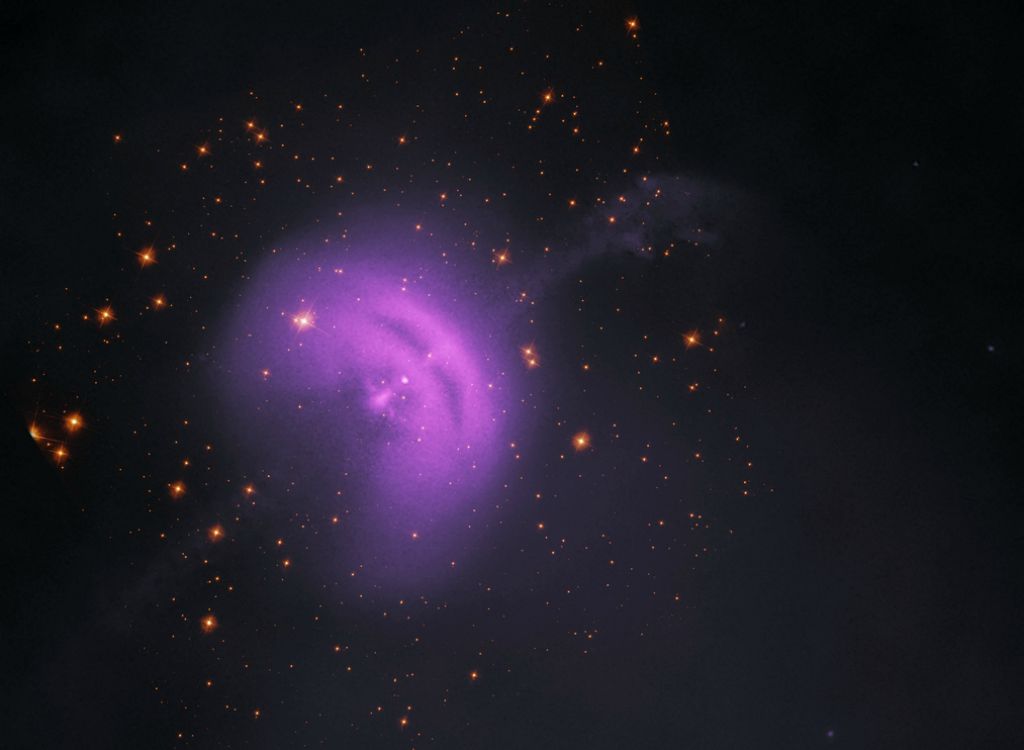

This spectacularly strange region is none other than the Vela Pulsar, which is, of course, associated with the equally spectacular Vela supernova remnant (this large, spherical region lurks about 800 light-years from Earth in the constellation of the same name).
The pulsar itself, like all pulsars, is a strange beast. Despite spanning only 12 miles across, it’s incredibly powerful. So powerful, in fact, that over the course of one second, it completes more than 11 rotations, spewing out charged particles that travel at nearly 70% of the speed of light (see below). Overall, this jet extends about a light-year across (0.7 light-years, to be exact).
All cliches aside, this particular view of the Pulsar is unlike any you’ve ever seen before, as the raw Chandra data has been reprocessed through an open source program, with the work carried out by Judy Schmidt. The goal was to combine the Chandra data-set with those belonging to Hubble and other ground-based observatories.
Judy talks about some of the difficulties she faced when combining all the data used to piece together this composite:
Looking through the Chandra Open FITS image album, I picked out the Vela pulsar because it was interesting but it also confused me. I’ve been wanting to combine datasets from other observatories with Hubble’s but until now have had difficulty finding the FITS files. Turns out it’s actually not that hard, especially with resources like Open FITS.

Another roadblock I ran into was figuring out how to align the data since stars are completely invisible in the Chandra data one must rely upon the coordinates from the FITS file headers in order to orient things.
The pulsar is the cool thing, here. First, you have to look at this animation of the northwest particle jet (North is up, east is left) waving around like water emitted from a hose. That’s really cool, but when I looked at that article, I was still having a hard time understanding how big the object itself was and whether or not any of it was visible optically. Enter the Hubble data. There are some old WFPC2 pictures in the archive which I put together to give some context with a few stars. The Hubble data doesn’t completely overlap with the Chandra data, but you get the idea.
Another thing which I think is very cool is that there appears to be a shadow cone around the southeast particle jet. I could be misinterpreting what I’m looking at and I can’t seem to find anyone else mentioning this, but I can’t get out of my head how cool it is to see an x-ray shadow. The polar jets and the equatorial structures are reminiscent of some of the light beams and dust tori I’ve seen in pre-planetary nebula images.
Note that I only had F555W (wideband green) data for the stars to work with. I chose to represent this with fiery red coloration. Chandra’s x-ray data is represented by magenta as it often is presented like this in Chandra’s press release images.
North is up.
See more of her work here, or for another example, see N49.